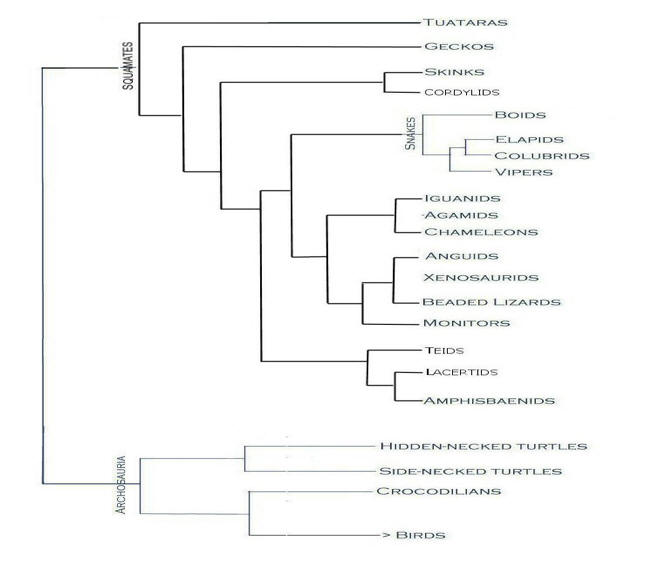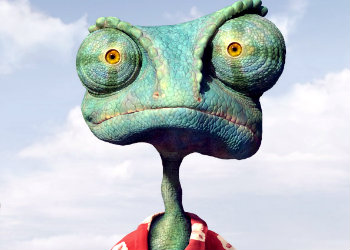
Classification
Domain: Eukarya
Members of Eukarya have membrane-bound organelles such as mitochondria, lysosomes, and Golgi Apparati. The cells also possess a true nucleus that contains DNA. Cell division is a common aspect of this domain, including meiosis and mitosis. (Kaiser 2014)
Kingdom: Animalia
Members of the Animalia kingdom are heterotrophic, multicellular and lack
a cell wall. Most Animalia show some means of movement at some point
in their life span
Phylum:
Chordata
Chordata possess gill slits, dorsal nerve chord, thyroid gland, a
notochord and at some point in their life, a post anal tail
The members of the class Reptilia possess
lungs, are cold blooded, have epidermal scales and produces amniotic
eggs
Order: Squamata
Squamata are the most diverse group within the
class reptilia. They have moveable skulls, joined and or paired
organs and keratin scales (Vertebrate Diversity 2007).
Suborder: Lacertilia
Lizard is the collective name for the members
of Lacertilia. Common characteristics are moveable eyelids, the
presence of four limbs and visible ear openings
Most highly specialized and distinctive clade
of lizards. Chamaeleonidae are most commonly known for their vast amount of colors and
some species are able to change colors. They have majestic crests or horns on
their
head, stereoscopic eyes, quick extrudable tongues and zygodactylous
feet (Heying 2003).
Genus: Chamaeleo
The most recently upgraded genus, Chamaeleo are easy pointed out due to the horns or elongated body parts protruding from their crests (Kundinger 2001).
Species:
Chamaeleo jacksonii

Phylogeny!

Figure 1. Class Reptilia Phylogenetic Tree Showing Archosaur Clade and order squamata. All members mentioned are currently not known to be extinct.
One of the most highly debated phylogenies is that of the class Reptilia. Due to its vastness and predominantly still unknown organisms many argue over how the phylogeny should be portrayed. This results in the creation of several different portrayals of the class Reptilia’s phylogenetic trees and all the organisms belonging to the class Reptilia. The order Squamata, an order within the class Reptilia, contains all scaled reptilia including the family Chamaeleonidae (WhoZoo 2005). By viewing the phylogeny of Squamata (Figure 1.) we are able to observe a narrower range of the Jackson chameleon’s, and other organisms belonging to the order squamata, common ancestors. When looking at the family Chamaeleonidae phylogeny (Figure 2.) the narrow rang of common ancestors is greatly widened and more observations can be made on common ansestory of the Jackson Chameleon. Figure 2 shows the genus’s contained within the family Chamaeleonidae. This shows the Genus Trioceros, the Genus the Jackson chameleon is located in, closest relation is with the genus Kinyongia (Vences 2013).

Figure 2. Large scale Phylogeny of Chamaeleonidae based On DNA Sequencing Research of 13 Genes.



